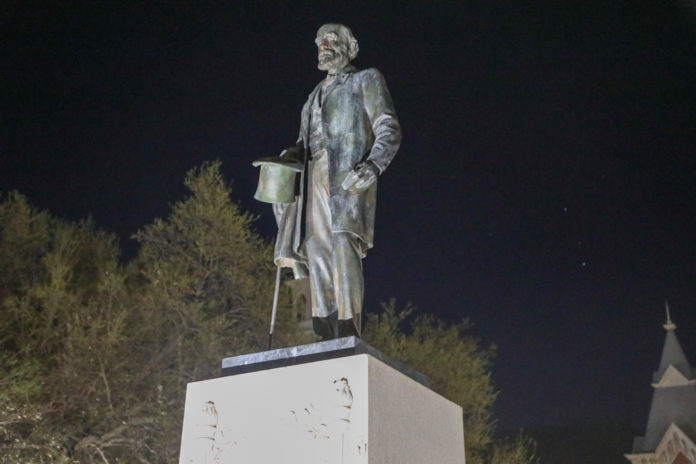
The Commission on Historic Campus Representations’ report was released on March 23, outlining the historical context around monuments relating to Baylor and its recommendations for those it found needing an update.
The announcement of the statues commemorating Baylor’s first Black graduates, Rev. Robert Gilbert, B.A. ’67, and Barbara Walker, B.A. ’67, in front of the Tidwell Bible Building is a concrete jump in the right direction, not just a recommendation. And it’s a great one, especially as Walker’s will be the first full statue of a woman on campus.
After that, the commission did a great job overall of recommending solutions. There’s no doubt in that. But the commission handled different areas of campus differently, and what it was given didn’t encompass the whole discussion.
The “unknown enslaved” suggestion, an oddly named monument to commemorate the enslaved men and women who built the first campus, is a great step forward for the university to recognize its beginnings. This line from page 29 of the over 90-page report exemplifies the ideas behind the racial justice movement on campus:
“If, as one walks out of Waco Hall, one could simultaneously see [monuments to Baylor’s founders] and a monument to the enslaved people who helped build the University, then it would convey the message that all of these people were founders of Baylor University and that the University would not be here today without their contributions.”
Both the graduate and “unknown enslaved” monuments would serve to educate future generations of students about the history of Baylor’s interaction with Black people. Prospective students would see the statues on tours, and a renamed and revamped Burleson quadrangle would offer an opportunity for the students of today and tomorrow the chance to leave an imprint on campus that is more accepting than it was previously.
Retiring the Baylor University Mace, a symbol created by combining a sword given by President Andrew Jackson, a slaveholder, to the Baylor family and walking sticks from Governor Sam Houston and Baylor President Rufus C. Burleson, also both slaveholders, would be another great step in the right direction. Replacing it with an option made up of “input from Baylor students, alumni, faculty, and staff to inform the creation of a new symbol of authority that represents all Baylor constituents” would make commencement feel more special for all involved.
One of the best recommendations is the fifth from the Independence section of the report. Line Camp is the place where the traditions and history of Baylor are instilled in each new class of freshmen, and teaching them Baylor was constructed by enslaved men and women would only strengthen the trust of each student in the institution.
Still, there are questions. The following recommendations are conflicting and confusing.
The simplest is why did the commission recommend moving the statue of Burleson and not those of Judge R.E.B. Baylor and the memorials for the other founders?
All four were slave owners. James Huckins served in the Confederate Army, and it’s not unreasonable to think both William Milton Tryon and Judge Baylor would have served if the first hadn’t died over a decade earlier and the second wasn’t 67 at the start of the war. If the ties to the Confederacy and slavery weren’t the reason for the difference, what was it?
Compounding the Judge Baylor conundrum is the commission’s recommendation to remove his face from the Founders Medal. Is the medal more important to protect from the stains of slavery than the campus students walk every day?
Another issue is the glossed-over treatment of Antonia Teixeira, a “young woman entrusted to the care of the Burleson family during Rufus Burleson’s presidency.” Teixeira became pregnant after allegedly being drugged and raped multiple times by the brother of Burleson’s son-in-law. The scandal that surrounded Burleson’s attempts to cover up the assault and discredit Teixeira eventually led to his resignation.
If this was a major contributor in distinguishing the differences between Burleson and the founders, it should have been fleshed out in more than a single paragraph in the middle of a bulleted list near the end of the assessment of the Burleson Quadrangle.
Now that links to slavery and the Confederacy have been discussed, it’s time to launch more commissions. Why not investigate the Baylor community’s potential role in the Waco Horror? Why not cover how it responded to Brown v. Board of Education? There are so many times when Baylor and Waco were in conflict with the humanity of Black and brown people. Why limit it to events and people that happened and existed before 1900?
This is a huge step forward, no matter how many questions or complaints come out of it. Doing more investigations and discussions on issues of racism, sexism and religious diversity only increases the transparency of the university’s history and shows a willingness to keep growing as it moves forward.





